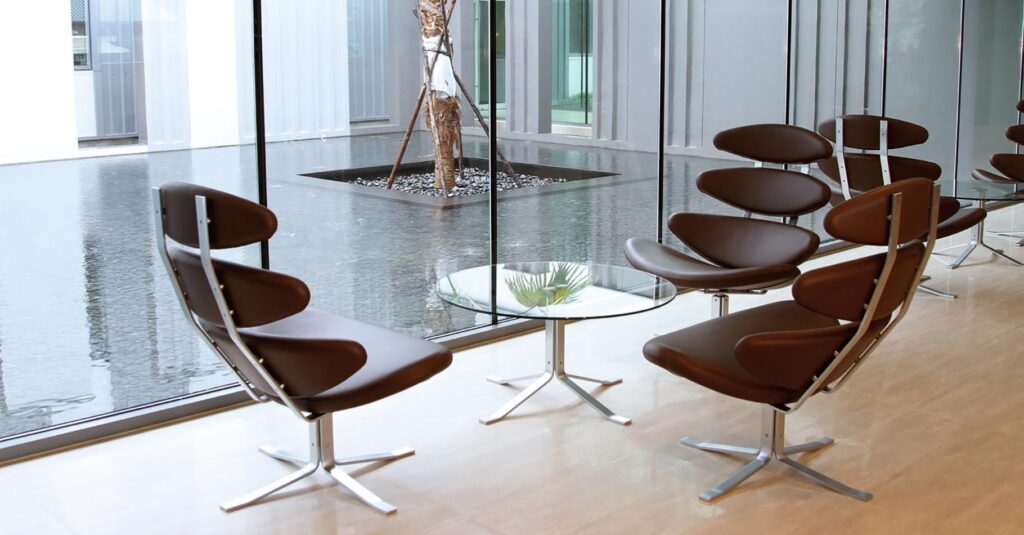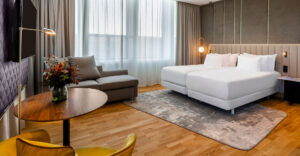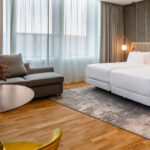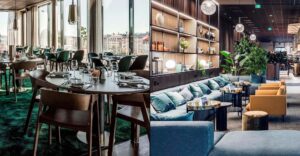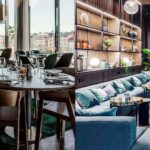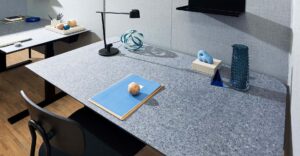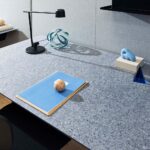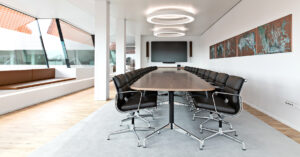Sustainability in more or less every corner of the building
At Grundfos Singapore sustainability is addressed in more or less every corner of the building – including the furniture, selecting durable and renewable materials, such as bamboo.
“Sustainability is a strong value at Grundfos. And by choosing a sustainable interior we “walk the talk” and demonstrate that we practice what we preach at Grundfos – also in our choice of furniture,” explains Poul Due Jensen, CEO of Grundfos Singapore.
Bamboo is a fast-growing resource which, in contrast to wood, can replenish itself in just six years. The furniture chosen is also ergonomically correct and made in materials that are suitable for recycling and have a high content of recycled materials.
“Ergonomics was also an important factor in our choice of furniture. As the responsible company we are, it goes without saying that we provide our employees with a healthy and comfortable environment in which to work. We spend more time at our place of work than anywhere else. We believe that employees who work at a comfortable workplace are more productive and more quality-conscious.”
Furniture supplied by HOLMRIS B8
The furniture in Grundfos Singapore was supplied by HOLMRIS B8, but the interior design philosophy is purely Asian. The meeting of the two different cultural approaches to interior design has produced interesting and dynamic results. The staff at Grundfos Singapore has furniture that is designed in accordance with the stringent Scandinavian requirements pertaining to ergonomics, environmental impact and durability.
The base of the storage units was made black to match the desk frame and legs. The storage units were also designed with front- and backside moldings as this was a better match to the lines and general design of the building.
“At Grundfos we are proud of Danish design and quality. We chose Danish design because it goes hand in glove with our values and we believe it creates an overall positive impression when you enter the building. Our partnership with HOLMRIS B8 meant that we were free to do what we do best – sell pumps. And we were confident that we could rely on HOLMRIS B8 to design the interior.”
The interior is however also implemented in accordance with ancient Asian Feng Shui traditions. The Feng Shui philosophy is that everything in the universe emits energy, and interior design is therefore a matter of leading energy in and around the building in order to create harmony between the building and the people who use it. Anything you bring inside the building has an energy and Feng Shui is all about getting the energies to work together to create harmony.
Activity-based workplace design
In Scandinavia, the traditional approach to workplace design is activity-based, which means that the point of departure when designing an interior is the activities that take place in the building. In Scandinavia colleagues who work together are located close to each other.
“HOLMRIS B8 played an active role in the entire process, from generating ideas to layout and making proposals for new kinds of work stations and workspaces. They presented an overall solution for our offices,” says Poul Due Jensen.
Even though the two interior design philosophies have very different points of departure, both aim to create optimal conditions for productivity and growth in the company. And that is the result of the interior design at Grundfos, Singapore.
